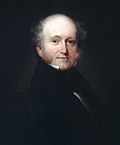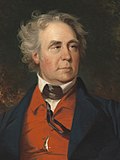| 1836 presidential election | |
  Nominees Van Buren and Johnson | |
| Convention | |
|---|---|
| Date(s) | May 20–22, 1835 |
| City | Baltimore, Maryland |
| Venue | Fourth Presbyterian Church |
| Candidates | |
| Presidential nominee | Martin Van Buren of New York |
| Vice-presidential nominee | Richard M. Johnson of Kentucky |
The 1835 Democratic National Convention was held from May 20 to May 22, 1835, in Baltimore, Maryland. The convention nominated incumbent Vice President Martin Van Buren for president and Representative Richard Mentor Johnson of Kentucky for vice president.
Contents
- Background
- Proceedings
- Presidential nomination
- Presidential candidates
- Vice Presidential nomination
- Vice Presidential candidates
- General election
- See also
- Notes
- References
Former Speaker of the House Andrew Stevenson served as the convention chairman. With the support of President Andrew Jackson, Van Buren won the presidential nomination unanimously. Johnson narrowly won the two-thirds majority necessary for the vice presidential nomination, overcoming a challenge from William Cabell Rives of Virginia. The Democratic ticket of Van Buren and Johnson went on to win the 1836 presidential election.



